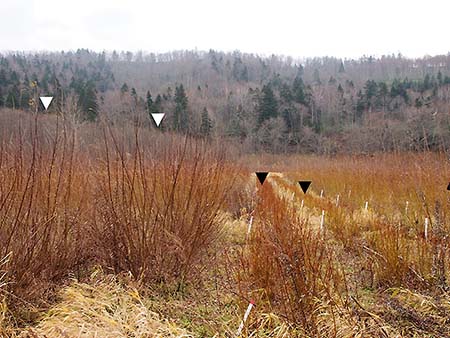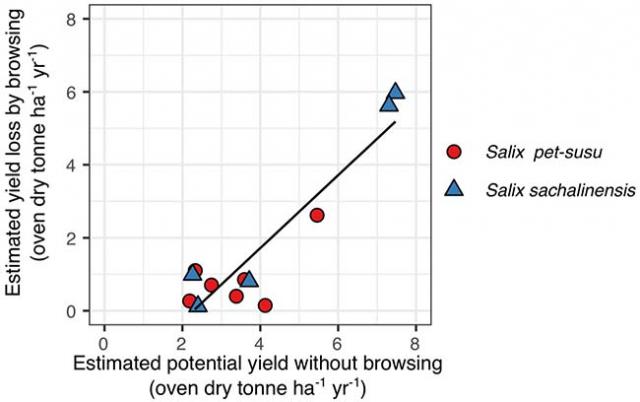Home > Research > Research Results > Research Results 2020 > Preventing deer browsing damage is necessary to produce high biomass yield in a short rotation coppice willow
Update:September 7, 2020
Main content starts here.
Preventing deer browsing damage is necessary to produce high biomass yield in a short rotation coppice willow
| Article title |
Estimation of Yield Loss Due to Deer Browsing in a Short Rotation Coppice Willow Plantation in Northern Japan |
|---|---|
| Author (affiliation) |
Hisanori Harayama (a), Qingmin Han (b), Makoto Ishihara (a), Mitsutoshi Kitao (a), Akira Uemura (b), Shozo Sasaki (a), Takeshi Yamada (a), Hajime Utsugi (c), Yutaka Maruyama (d) (a) Hokkaido Research Center, FFPRI, Sapporo, Hokkaido, Japan. (b) Department of Plant Ecology, FFPRI, Tsukuba, Ibaraki, Japan. (c) Principle Research Director, FFPRI, Tsukuba, Ibaraki, Japan. (d) Nihon University, Fujisawa, Kanagawa, Japan. |
| Publication Journal |
Forests, 11(8): 809, MDPI, July 2020 DOI:10.3390/f11080809( External link ) |
| Content introduction |
In recent years, the use of wood biomass as an energy source has been increasing around the world as a way of counteracting global warming caused by greenhouse gases. In Europe and North America, a method for producing wood biomass has been developed in which willow is harvested in 3-to-5-year cycles with repeated sprouting, called short rotation coppice willow. However, this method has not been practical in Japan. Therefore, we have been investigating one of the issues that needs to be resolved for practical use, that is, damage caused by browsing by the shika deer Cervus nippon yesoensis. In a willow test plot, an electric fence was installed as a countermeasure to deer browsing, but malfunctions occurred in the summer of the first year of sprouting, and in about one month deer had caused damage from their browsing. In the test plot, clones of 12 varieties of 2 tree species were cultivated, and there were significant differences in browsing damage among these clones (Photo). Three years later, after the electric fence had been repaired to prevent deer intrusion and measurements were taken of biomass yield, it was found that the clones with potentially higher growth suffered more intensive damage from deer browsing (Figure), and even after the deer had been removed for two years or more, we could see that the yield was still not satisfactory. These findings suggested that in order to obtain a high yield in a short rotation coppice willow, it is extremely important to counteract browsing by deer. The results of this research will help to improve techniques for cultivating of short rotation coppice willow, and thus help to stabilize the supply of wood biomass.
Photo: View of a willow test plot that has been damaged by deer browsing. The black triangles (▼)denote clones that suffered major damage, while the white triangles (▽)show clones that suffered only minor damage.
Figure: Relationship between estimated potential biomass yield without browsing damage and estimated amount of biomass loss caused by deer browsing. Clones with potentially higher growth are located farther to the right on the X-axis. ※Note: Part of this figure has been modified from the original journal article. |
Copyright © Forest Research and Management Organization. All rights reserved.


